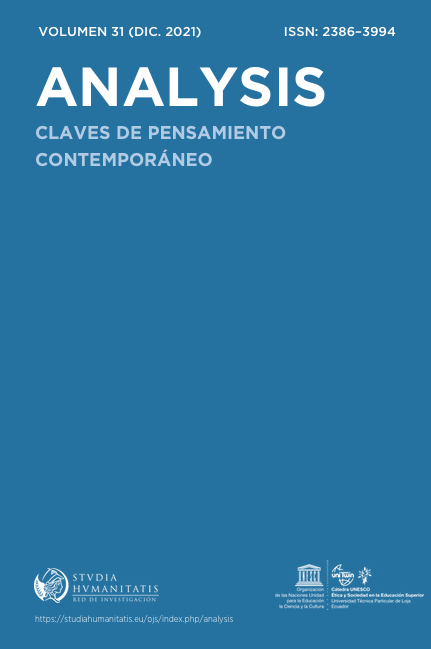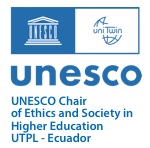Bioart and science, a reflection from art
Abstract
This work is an investigation that raises a relationship between art and science, carried out with the experimentation of a living organism (Medusomyces gisevi) where, in addition, other cases of experimentation are critically shown, in relation to science with art throughout the last years. Within the research, three pH levels were established to work with the organism, from which an experimental model was designed, generating a symbiosis that could be used as a composite material, which substitutes tissues to create works of art, allowing the development of on this aesthetic resource an artistic sample. It was evidenced that experimentation is essential for the production of bio-art works. Also generating an analysis and reflection on the relationships between the aforementioned disciplines and the ethical principles that must be handled to respect life.
Downloads
References
Arandia, O., & Portales, L. (2015). Fundamentos de la gestión humanista: una perspectiva filosófica (Underpinnings of Humanistic Management: A Philosophical Approach). AD-minister, 26, pp. 123
Benítez, Laura. (2013). «Una estética de la desorganización». Tesis Doctoral Universidad Autónoma de Barcelona, Barcelona, pp. 25.
Carreño, Luz, Caicedo Luis & Carlos Arturo Martínez Riascos. (2012). «Técnicas de fermentación y aplicaciones de la celulosa bacteriana». Una revisión, Ingeniería y Ciencia 8, no. 16. pp.36.
Cortina, A. (2016). «Bioética para el siglo XXI: construyendo esperanza». Revista Iberoamericana de Bioética 1. Valencia, pp. 4.
Curtis H, Sue-Barnes N, Schnek A, Flores G. (2006). Invitación a la Biología 6ª, Editorial Médica Panamericana, Buenos Aires, pp. 442.
Darwin, C. (1921). El Origen de las especies, Editorial Biblioteca Nacional de Chile, Madrid, p. 60.
González, María Antonia. (2016). Bioarte y Ontología Estética, Facultad de Filosofía, Universidad Nacional Autónoma de México, pp. 30.
Harari, Y. Homo Deus. (2007). Breve historia del mañana, Editorial Debate, Madrid, pp. 353.
Iraidis, J. (2016). Arte y Ciencia Aproximaciones. Editorial Litorama C.A., Merida.
Kac, Eduardo. (2005). Life transformation–art mutation. Educating Artists for the Future: Learning at the Intersections of Art, p. 49.
Kac, Eduardo. (2010). Telepresencia y bioarte: interconexión en red de humanos, robots y conejos. (Vol. 6). CENDEAC.
Kac, Eduardo. (2020). Bioarte, una forma de entender la vida. Leviatán, En Camaleones-Notimex. 27 de mayo.Recuperado: https://leviatan.mx/2020/05/27/bioarte-una-forma-de-entender-la-vida-eduardo-kac/
Matewecki, N. (2010). El bioarte y los problemas de su definición. Arte e Investigación, Editorial S. García, Buenos Aires, p. 14.
Massara, G. (2013). «Arte y nuevas tecnologías, lo experimental en el bioarte». Buenos Aires. Argentina :Cuadernos del Centro de Estudios en Diseño y Comunicación (Ensayos) no. 45, p. 34.
Mitchell, R. Mitchell, R. (2013). Robert Mitchell habla con The Living Form. (L.B. Guzmán Martínez, entrevistador, L. B Guzman, Traductor) Fanzine digital The Living Form. Recuperado el 26 de enero de 2019, de http://www.thelivingform.com/copia-de-robert-mitchell,
Pastor, F, Rodolfo. (2016). La Escalinata de los Jeroglíficos como invitación a la historia, presentación ante el Seminario de Harvard sobre La Escalinata. Honduras.
Pirson, M., Steinvorth, U., Largacha-Martinez, C., & Dierksmeier, C. (2014). «Transforming Capitalism. Humanistic Management Network». New York: Research Paper Series. (2520295).
Shahen, H. (2012). El Gato De Schrödinger. Editorial UNAM. México. p. 90.
Copyright (c) 2021 © Analysis

This work is licensed under a Creative Commons Attribution-NonCommercial-NoDerivatives 4.0 International License.








